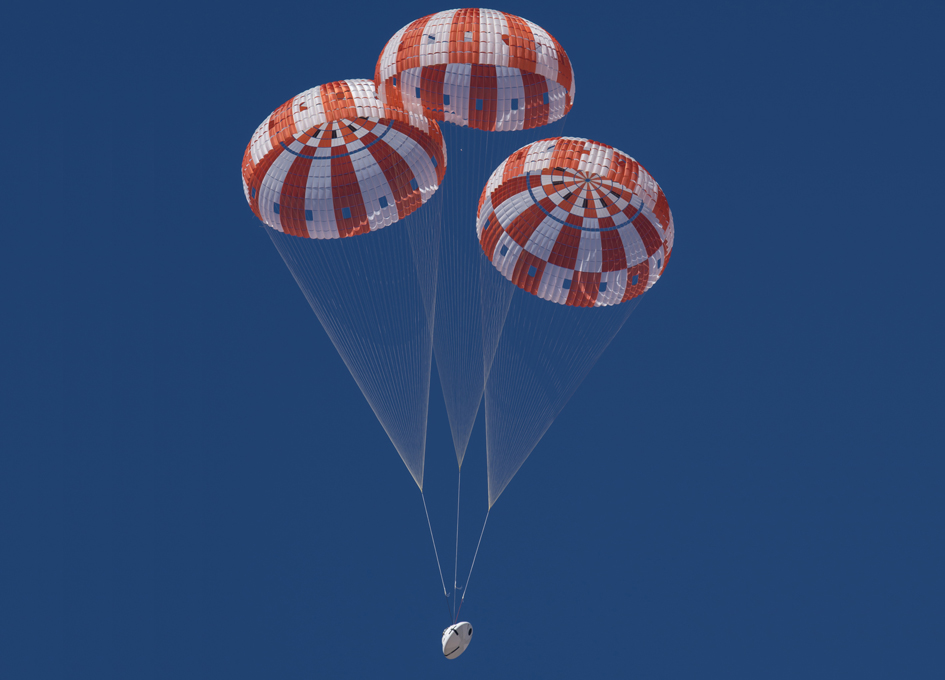Another Successful Orion Parachute Test

The team developing and building Orion’s parachute system that ensures the crew module can safely descend to Earth evaluated how the parachutes perform during a scenario in which an abort while on the launch pad is necessary.
When Orion returns to Earth from deep space missions beyond the moon, the system will customarily deploy 11 parachutes in a precise sequence to help slow the crew module down from high speeds for a relatively slow splashdown in the Pacific Ocean. But the parachutes must also be capable of sending the crew module to safety if it were to be jettisoned off a failing rocket without time for the full deployment sequence to occur.
In a June 14 test at the U.S. Army Proving Ground in Yuma, Arizona, engineers dropped a mock Orion capsule out of a C-17 airplane at 25,000 feet in altitude to test how the system will fare when only Orion’s three main orange and white parachutes deploy. The test evaluated performance when the parachutes experience a low altitude and low dynamic pressure.
“Orion will take astronauts farther than we’ve been before, and an important part of successful missions in deep space is making sure we can bring them home safely, even in scenarios where something might go wrong,” said Yasmin Ali, landing and recovery systems manager for Orion. “We’re testing for all kinds of situations Orion’s parachutes could face.”
Orion’s parachutes are in the midst of being qualified for flights with astronauts and put through a variety of normal and failure scenarios over the course of eight total tests to ensure the parachutes can safely help the crew module and the astronauts inside safely descend.








